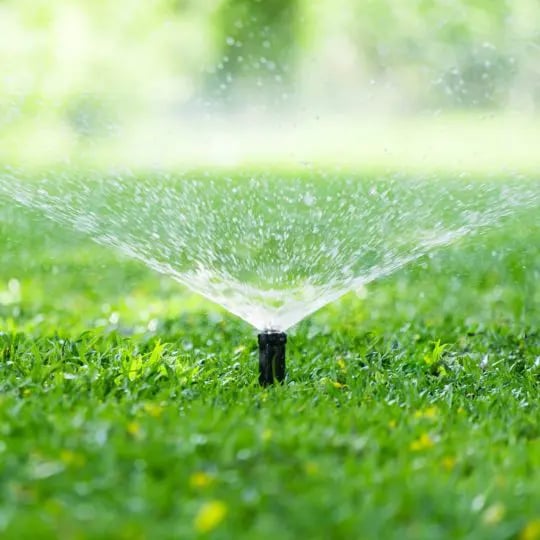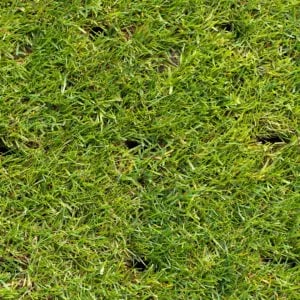Watering Lawn After Aeration and Overseeding

When you aerate your soil, hundreds of small holes are jabbed into your lawn to loosen compacted soil. It is often combined with overseeding your lawn, which involves spreading an abundance of new grass seeds. The seeds then nestle in the holes, making germination even easier.
These tasks are relatively easy if you have the right tools, but there are some things you need to think about after you finish, like how long you should wait before watering your lawn after aeration and overseeding. Read on to find out.
Table of Contents
Your Schedule for Watering Your Lawn After Aeration and Overseeding
The Importance of Aeration and Overseeding
There are many reasons to include aeration and overseeding in your yearly lawn care routine:
- Fill in bare spots to provide a thick, green lawn
- Choke out weeds and crabgrass
- Loosen and reduce compacted soil
- Increase root development
- Increase water retention
- Improve overall plant health
- Allow seeds to settle in the soil and increase the chances of germination
- Make lawn treatments like fertilization more effective
- Allow organisms like earthworms to thrive and recycle nutrients

Your Schedule for Watering Your Lawn After Aeration and Overseeding
Watering your lawn after aeration and overseeding is essential to ensure your grass seeds germinate. Your lawn’s watering needs are different after these tasks than other times of the year because incorrect watering can negate your hard work.
Ryan Petitti, Green Lawn Fertilizing director of technical & quality assurance, explains how to approach watering after aeration and overseeding:
Weeks 1-4
Proper watering over the course of the first four weeks will determine the success or potential failure of the new grass seed. Immediately following an aeration service, begin watering the new grass seed.
The seedbed must be kept damp for a continuous period of 28 days (the time it takes for the seed to germinate fully).
Do not drown the seed when watering, but moderately dampen the first several inches of the soil. This may require more than a single watering each day, depending on the weather. Water 10-20 minutes per zone each morning, as the air temperature is cooler in the morning, allowing more water to penetrate the soil due to less evaporation.
After 4 Weeks
Once 28 days have passed and the new seed has fully germinated, it’s time to return to a regular watering schedule. We recommend watering 2-3 times each week. The total amount of water that should be applied weekly is 1″ 2″ dependent on the type of soil you have.
For example, sandier soils dry out quicker and require the higher end of the recommended watering. Similar to when aerating and overseeding, the best time to water is during the morning when air temperatures are cooler and there is less evaporation.
The Tuna Can Method: How do you know when your lawn has 1″ to 2″ of water? Petitti suggested using tuna cans.
Place several empty tuna cans around an irrigation zone. After running the zone, the amount of water dispersed can be measured in the cans, giving you an understanding of the amount of water being applied in a set period of time.
For Aeration and Seeding Help, Call Green Lawn Fertilizing.
The friendly lawn-care professionals at Green Lawn Fertilizing are here year-round to help you properly aerate your PA, NJ, or DE lawn. If you notice bare patches, puddles, or excess thatch, don’t hesitate to contact us today at 855-469-0692 for a free consultation about our aeration and seeding services to get your lawn on the road to recovery.
